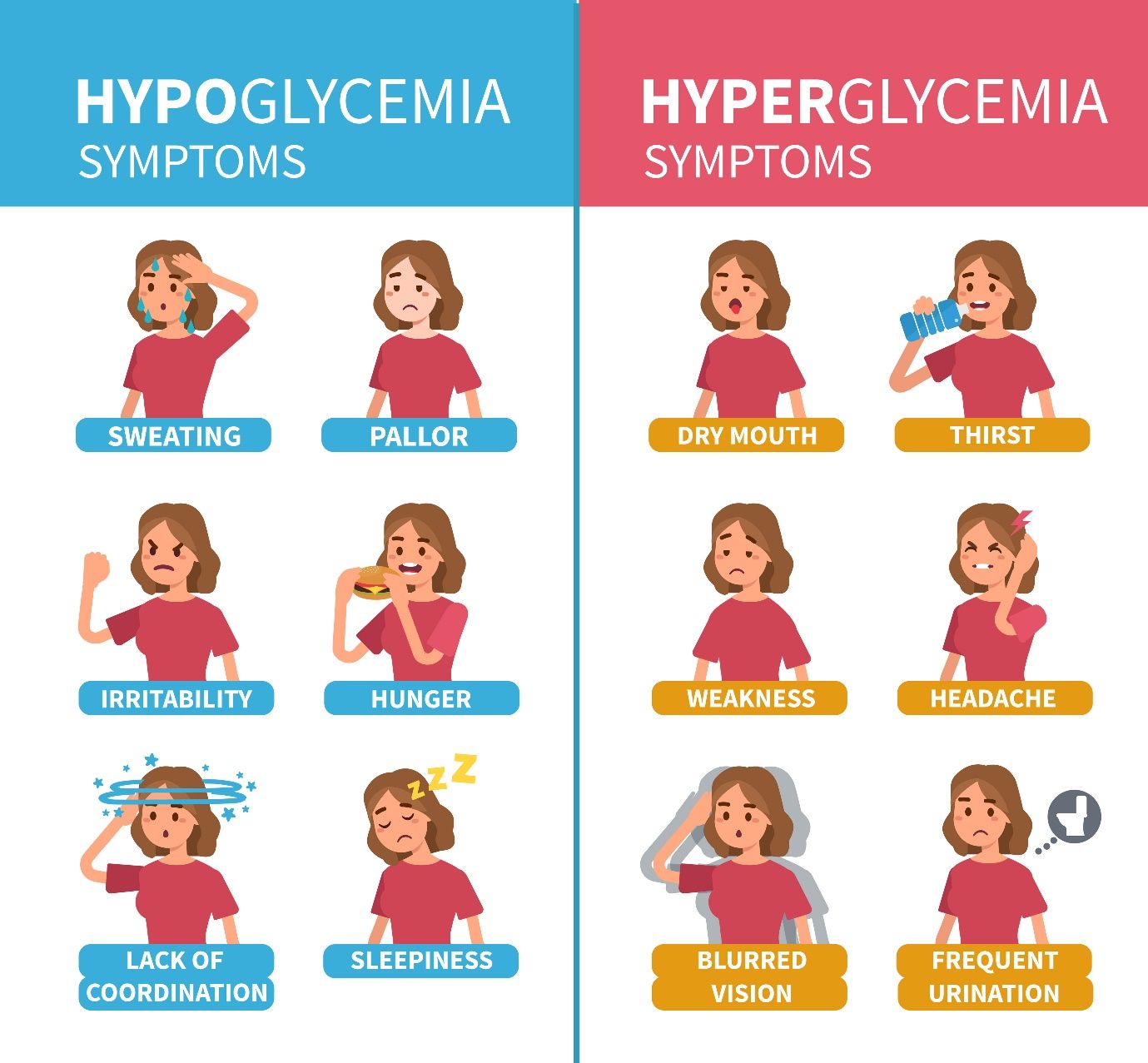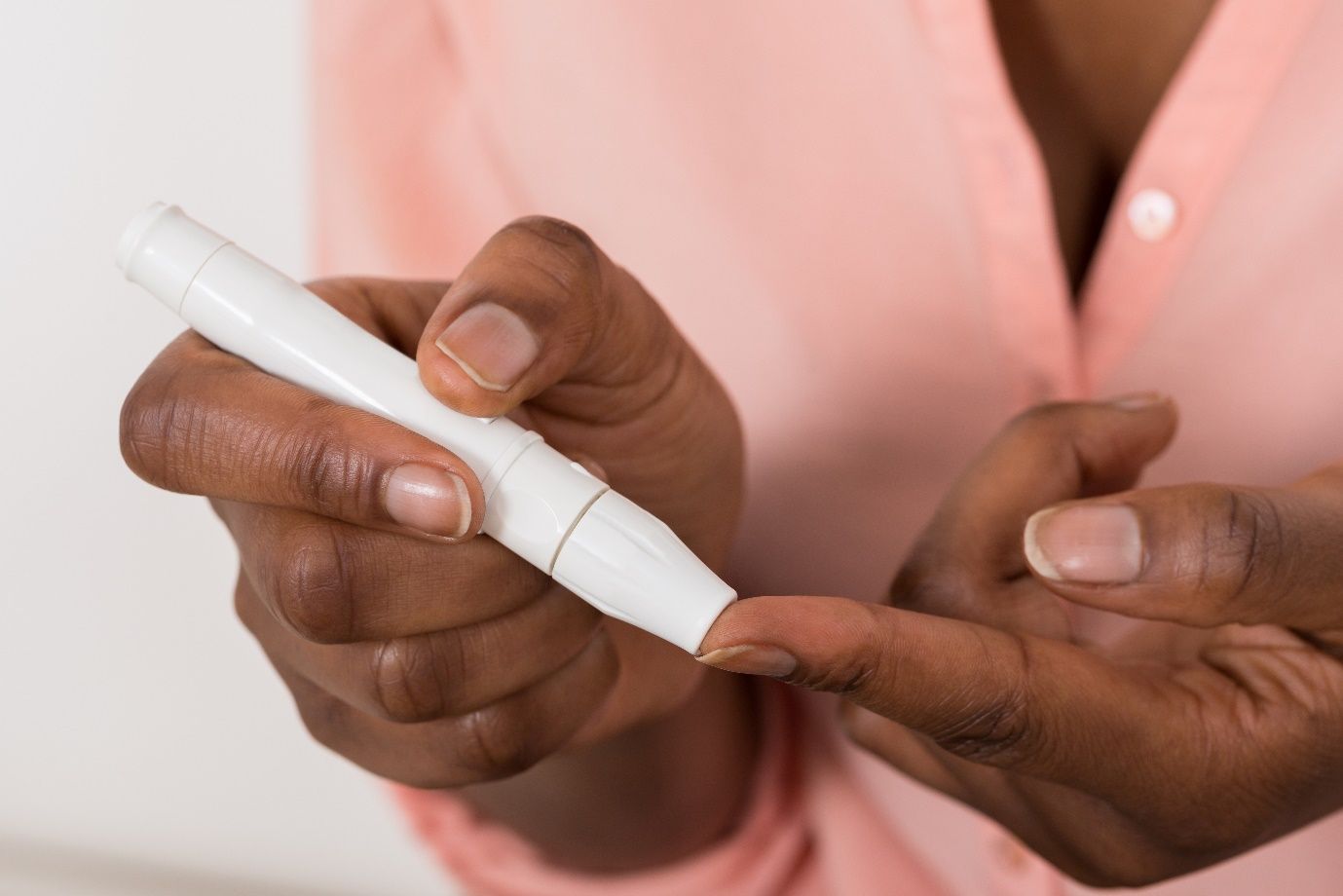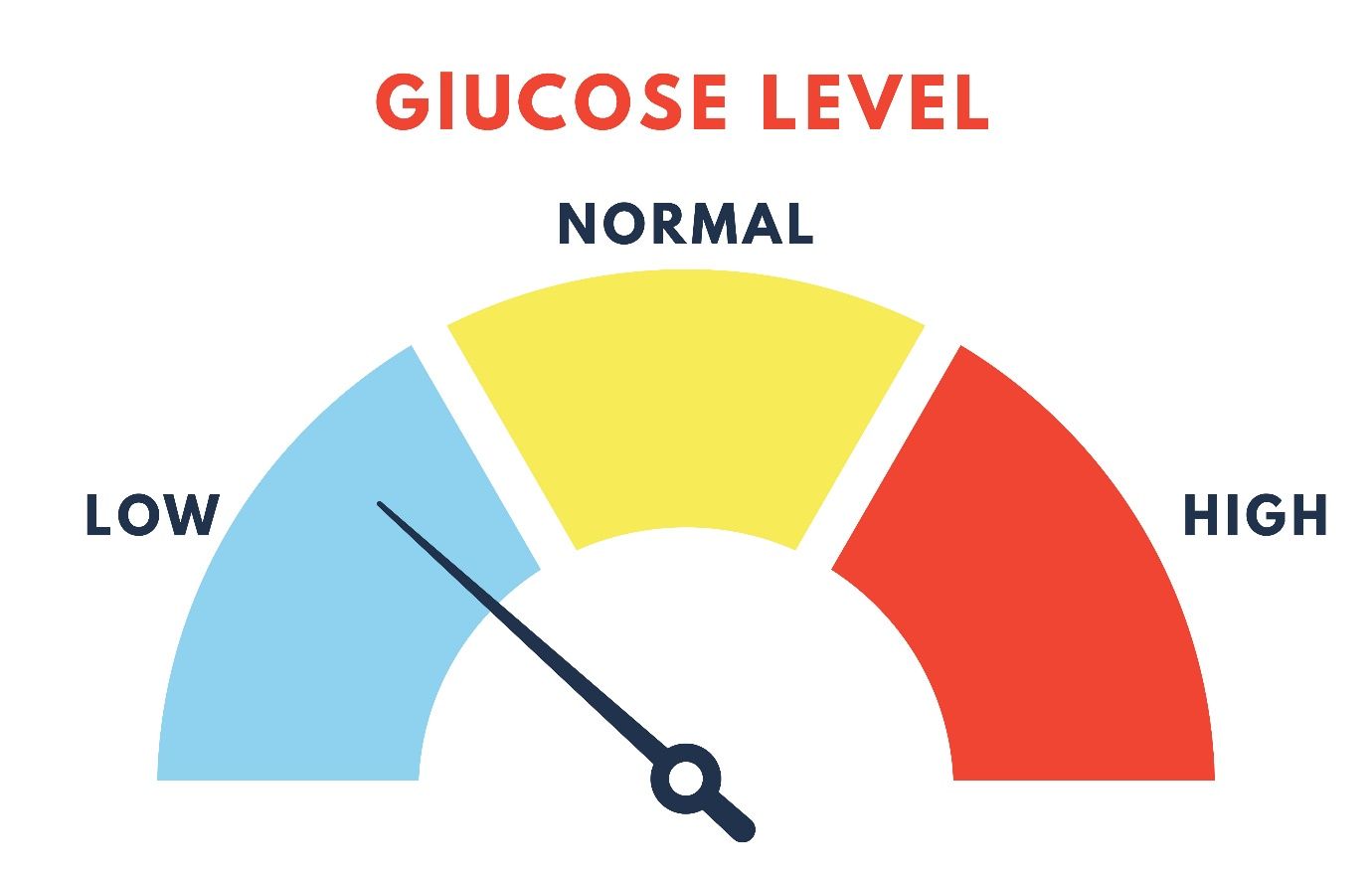Low blood glucose, also called hypoglycemia, can be life-threatening for people with diabetes. It can be caused by eating too little food, taking too much insulin or other diabetes medication, or being extra active. If left untreated, low blood glucose can progress to diabetic coma. Everyone with diabetes needs to know the symptoms of low blood glucose so they can act right away. *If you work or live with someone who has diabetes, you should know the symptoms and treatment too!

Credit: Adobe Stock
The only way to know for sure that your blood glucose is low is to test it with your meter. If you are using a continuous glucose monitoring system, it is still recommended that you test your blood glucose with your meter if you are having symptoms.

Credit: Adobe Stock
Self-Treating Low Blood Glucose
Be prepared before you feel symptoms!
- Ask your doctor or diabetes team what "number" is low blood glucose for you. That way you will know ahead of time when to treat yourself. Also, ask how much sugar to take if your blood glucose is low.
- Always carry pre-measured sugar. The most convenient forms are glucose tablets or gel, table sugar, or hard candy. The appropriate amount needed to treat low blood glucose is usually 15 to 20 grams. Always check it again after 15 minutes to see if you need another serving.
- Many people confuse symptoms of low blood sugar with general fatigue or weakness, so it is important to TEST to be sure of what steps to take. If you are not able to test your blood glucose, it is okay to call your provider or other health professionals to ask for advice because low blood sugar can result in a medical emergency.
- If you are at high risk for very low blood glucose (below 54 mg/dL), you should also always have a glucagon kit available. Anyone you spend considerable time with, such as family members, teachers, or caregivers, should know how to administer glucagon in case of an emergency.

Credit: Adobe Stock
When You Feel Symptoms
STEP 1. Check your blood glucose. If you cannot check your blood, but feel like your blood glucose is low, treat it as low.
STEP 2. If your blood glucose is low (less than 70 mg/dL*), eat something that will get glucose into your blood quickly. For example:
- Eat 15–20 grams of sugar (see list of foods).
- Wait 15 minutes and test again.
- If still below 70 mg/dL, eat 15–20 grams of sugar again.
- Repeat until your blood glucose returns to normal.
- Once it is normal, eat a meal or snack to make sure it doesn’t lower again.
- If your blood glucose does not return to normal after treating with glucose as described above, call your doctor or 911, or have someone drive you to the emergency room. Do NOT drive when your blood glucose is low.
Table 1. Foods with 10 to 15 grams of sugar.
Severe hypoglycemia can lead to unconsciousness or a seizure and is a medical emergency. If your blood glucose is less than 54 mg/dL, you may need more than just sugar to bring your glucose level higher, quickly. Therefore, you should understand when to administer glucagon via injection. It would be important to discuss with your health provider the best time to use glucagon, if you need it. In addition, after repeated episodes of hypoglycemia, it is a good idea to be seen by a physician as soon as possible, either in an office or in the emergency room.
After Self-Treating your Low Blood Glucose
If you will not be eating a meal within 30 minutes, have a snack with protein and carbohydrate. Snack ideas include:
- Peanut butter and crackers or cheese and crackers
- Half of a sandwich (cheese, meat, or peanut butter)
Have a plan in place and talk with your medical team regarding the way to handle your insulin or diabetes medication regimen after self-treating a low blood glucose event.
*mg/dL = milligrams per deciliter of blood
References
American Diabetes Association. (n.d.). Hypoglycemia (low blood glucose). Retrieved on February 22, 2018. https://diabetes.org/healthy-living/medication-treatments/blood-glucose-testing-and-control/hypoglycemia
American Diabetes Association. (2017). 6. Glycemic targets. Diabetes Care, 40(suppl. 1), S48–S56. http://care.diabetesjournals.org/content/40/Supplement_1/S48
Kedia, N. (2011). Treatment of severe diabetic hypoglycemia with glucagon: an underutilized therapeutic approach. Diabetes Metabolic Syndrome and Obesity: Targets and Therapy, 4, 337–346. https://www.ncbi.nlm.nih.gov/pmc/articles/PMC3180523/